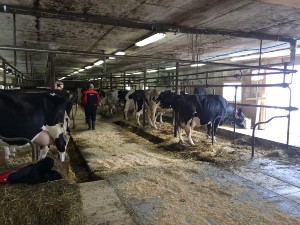Keep house flies and stable flies under control in dairy buildings with an integrated fly control program. This type of program utilizes a variety of fly control methods based on knowing pest biology and habits, proper sanitation, manure management and timely applications of insecticides.
Lee Townsend, Extension Entomologist with the University of Kentucky writes that house fly and stable fly maggots develop in moist, spilled feed, and bedding or organic matter mixed with manure, in and around dairy barns.
He writes that sanitation is the key to any successful fly control program since it removes fly breeding sites. Without proper sanitation, chemical control treatments will be of limited success.
Regular removal of manure and thorough removal of manure from corners, around posts and under feed bunks is necessary to prevent fly breeding.
In addition Townsend offers these suggestions to fly control:
- Residual fly sprays should be applied to fly resting areas in barns and loafing sheds to control adult flies. Insecticides applied as space sprays, mists or fogs may be used to provide rapid knockdown of adult flies but have no residual activity and will only control flies present at the time of application.

- Larvicides can be applied directly to maggot-infested manure as a means of temporarily reducing fly numbers when sanitation and manure management cannot be used. Rabon 50WP or Ravap EC at the rate of 1 gal of finished spray per 100 ft sq of surface. See label for mixing instructions. Treat only “hot spots” containing large numbers of maggots if possible.
- Fly traps can capture large numbers of house flies, but generally do not reduce numbers significantly. The solution to severe fly problems lies in finding and treating or eliminating breeding sites.
Read more of Townsend’s tips and information here.

